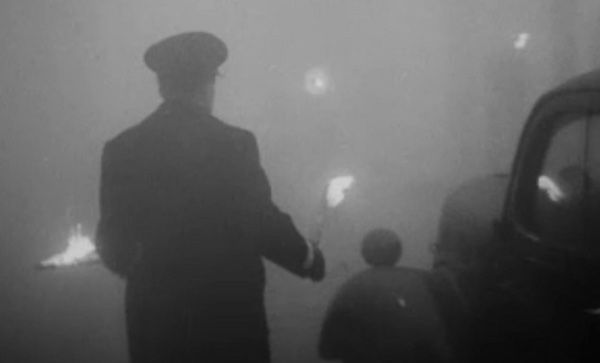Choking Death - The 1952 London Smog
- Dec 9, 2023
- 2 min read
#66 Science in History smog
9th November 1952
Exploding Lake
The Great Smog of 1952 stands as a disturbing chapter in London's history, unfolding over five days from December 5 to December 9. This severe event was one of the deadliest air pollution episodes in recorded history.

A perfect storm of contributing factors led to the formation of the smog. A spell of cold weather gripped London, prompting residents to intensify coal burning - the primary energy source for both households and industries at the time. The combustion of coal led to the release of large amounts of sulfur dioxide and particulate matter (soot) into the air. Compounding the issue, the weather conditions during this period featured a 'temperature inversion', trapping the released pollutants near the ground and stopping them from being dispersed.
Typically, in normal atmospheric conditions, temperature decreases with altitude, allowing warm air to rise. However, during a temperature inversion, a layer of warmer air forms a barrier, trapping cooler air beneath it. This hindered the upward movement of pollutants, causing them to accumulate at ground level.
The resulting atmospheric concentration of pollutants created a dense, yellowish smog (smoke fog) that enveloped the city. Visibility plummeted, and the dense, choking air made breathing hazardous. The immediate consequences were severe and swift, resulting in a surge of respiratory illnesses and exacerbation of pre-existing conditions such as asthma and bronchitis. Hospitals found themselves inundated with patients showing signs of respiratory distress.
The toll on human life was staggering, with an official death count of around 4,000 attributed to the 1952 smog. However, some estimates suggest that the actual number of casualties could have been much higher. The majority of victims were elderly individuals and those with pre-existing respiratory conditions. The enduring legacy of the smog was a sustained increase in respiratory diseases and other health issues for years to come.
In the aftermath of the Great Smog, the dangers of air pollution prompted significant legislative changes. The British government responded with the implementation of the Clean Air Act of 1956, a measure aimed at controlling and reducing air pollution. This legislation included directives such as the relocation of power stations away from urban areas and the promotion of smokeless fuels, marking a turning point in environmental policy and public health initiatives.
I'm always eager to hear from you, so please feel free to leave your comments! Your feedback is much appreciated.




Comments